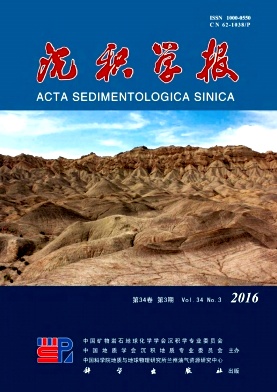Sediment Distribution and Its Controlling Mechanism in the Littoral Zone of Sigengsha, Hainan, China
doi: 10.14027/j.cnki.cjxb.2016.03.008
- Received Date: 2015-02-02
- Rev Recd Date: 2015-03-29
- Publish Date: 2016-06-10
-
Key words:
- sediment component /
- grain size parameter /
- sedimentary environment /
- controlling mechanism /
- Sigengsha littoral zone
Abstract: Owing to the interaction between land and ocean, littoral zones present unique sedimentation. Grain size, as a basic attribute of sediment, is an essential question of sediment dynamics. Grain size is controlled by sediment source and sink, and its parameters play a significant role in determining dynamic relationship between sediment and depositional environment. Sigensha littoral zone is located in the west of Hainan Island, the second largest island of China, extending from the Changhua River delta on the north to the Beili Bay on the south. This zone shows diverse sediment sources, complicated hydrodynamics and variable morphology, where special coastal evolution process is closely connected with its sedimentary environment. A field sampling was conducted in the study area on January 2013 with 185 surface samples collected. Mastersize 2000 laser particle sizer was applied to measure grain sizes all less than 2 mm and the sediments with sizes larger than 2 mm were tested by a comprehensive method, utilizing both sieve analysis and laser particle sizer. Sediment classification and nomenclature were based on Fork method and grain-size parameters were calculated including mean grain size M, standard deviation σ, skewness Sk and kurtosis K. The distribution of grain size parameters in the study area was then acquired by Kriging interpolation. Combined with sediment sources and bathymetric information, the sedimentary environment was divided by using the ternary diagram of Fleming. At last, the controlling mechanism of sediment distribution was investigated combined with hydrodynamic factors and morphology.
The results suggest that the entire study area comprise 12 sediment types, mainly including sandy silt, silt, silty sand and gravel-bearing sand. Sandy silt, the mostly distributed sediment, mainly occurs in the central study area. Silt mainly distributed in the southern study area. Similar to sandy silt, silty sand is also distributed in the central study area. Gravel-bearing sand mostly distributed in the nearshore of the northern study area. Overall, the mean grain size of the study area ranges widely (-0.70 φ to 7.13 φ) and presents a fining trend from north to south. The standard deviation of sediment ranges from 0.30 to 2.73 with mean value of 1.75. It is characterized by a worse-worst-worse trend from north to south. The skewness changes from -0.77 to 0.73 with average of 0.09. The kurtosis range from 0.52 to 4.35 with average of 1.13 and shows mesokurtic to platykurtic pattern. Based on Fleming ternary diagram, combined with sediment sources, hydrodynamic and topographic condition, the study area was divided into three sedimentary districts: Sigengsha nearshore zone, middle Beili Bay zone and Basuo port nearshore zone. In the sediment distribution pattern, the western study area was mainly influenced by strong tidal currents. The nearshore was mostly impacted by wave winnowing and transport and was characterized by fine sediment distributed in the middle and coarse sediment in the two sides. Laterally, the Sigengsha nearshore zone is a high-energy coarse-grained sand area, where sand content is as large as 78.68%, mainly affected by sediments from Changhua River. The Beili Bay zone is a medium-energy transitional area of silty sand and sandy silt, where the grain sizes range widely. The Basuo port nearshore zone is a low-energy area, where silt content occupies 64.43%, and where the sediment is the finest and most likely comes from open sea.
| Citation: | ZHOU Le, CHEN ShenLiang, CHEN Qing, ZHONG XiaoJing, ZHENG WeiHeng, LIU XiaoXi. Sediment Distribution and Its Controlling Mechanism in the Littoral Zone of Sigengsha, Hainan, China[J]. Acta Sedimentologica Sinica, 2016, 34(3): 506-515. doi: 10.14027/j.cnki.cjxb.2016.03.008 |






 DownLoad:
DownLoad: